He is well known for his bifocals and quippy cartoons, but these facts about Benjamin Franklin reveal a much more eccentric man.
Benjamin Franklin is a crucial figure in the history of the founding of the United States. His accomplishments are so well known that he’s often referred to as the “only U.S. President to have never been U.S. President.”
But Franklin was more than a politician. His inventions — which range from the odometer to his own alphabet — show the great grasp of his mind. He also made a name for himself as a talented writer and publisher.
From his political triumphs to his scientific breakthroughs to his colorful and eccentric personal life, these are some of the most surprising facts about Benjamin Franklin, America’s favorite renaissance man.

Benjamin Franklin Was Once The Richest Person In America…
By 1785, Benjamin Franklin had become the wealthiest person in the newly formed United States. They didn’t put his face on the $100 bill for nothing — his estimated net worth in today’s money is around $10 billion.
… But He Could Have Been Richer If He’d Patented His Inventions
Benjamin Franklin decided not to patent his many inventions because he believed that it was enough to help others with his creations. This would also allow other inventors to tinker with and build upon his ideas.
He Played A Crucial Role In Achieving American Independence
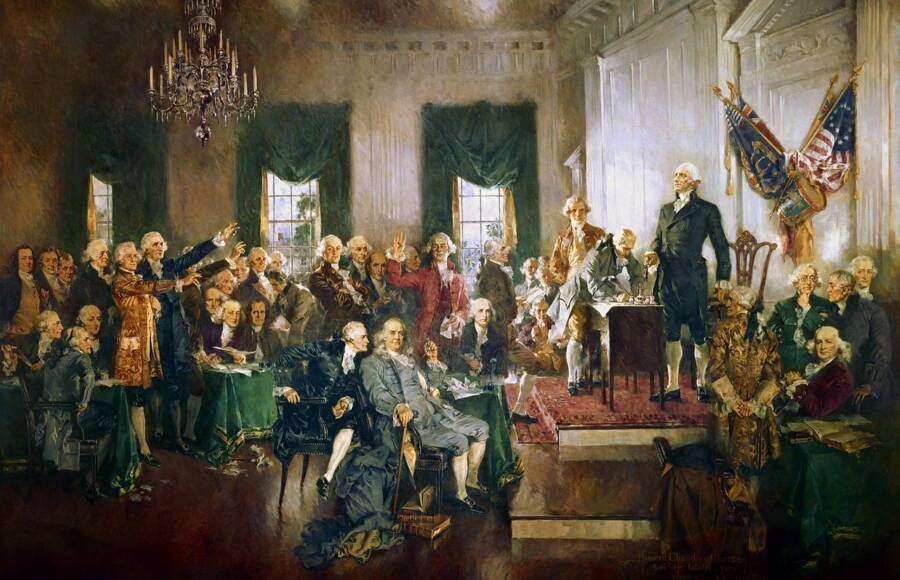
Wikimedia Commons In this painting of the signing of the Constitution, Benjamin Franklin is depicted front and center (seated, in gray).
Benjamin Franklin was present for many important moments throughout the American Revolution. Not only did he sign the Declaration of Independence in 1776, but he also signed the Treaty of Alliance with France in 1778, the Treaty of Paris in 1783, and the United States Constitution in 1787.
He was also the oldest person to sign the Declaration of Independence at the age of 70, and the oldest to sign the Constitution at the age of 81.
Benjamin Franklin Almost Died Trying To Electrocute A Turkey
Benjamin Franklin was famously fascinated by electricity. He performed a number of experiments with it, including using it to cook food. Eventually, he created a method of using electricity in order to kill and cook turkeys.
In a letter to his brother, John, Franklin detailed how he decided to show off this method at a party. He brought out the doomed turkey and started setting up the charge when, all of a sudden, the attendees saw a bright flash of light engulf him. Franklin had accidentally electrocuted himself — though in the letter he confessed that his ego sustained the biggest injury.
Surprising Fact About Benjamin Franklin: He Published A Lot Of Obscene Writing
Despite his studious reputation, Franklin did not shy away from the salacious. He once wrote a letter titled “Advice to a Friend on Choosing a Mistress,” which was considered obscene at that time and wasn’t published when his collection of papers was made available during the 19th century.
The controversial letter contained many sexual references and basically touted the virtues of choosing an older mistress over a younger one.
Franklin Also Wrote About Farts
Franklin penned an essay called “Fart Proudly” in 1781, which he sent to the Royal Academy of Brussels, a respected scientific organization.
“It is universally well known, that in digesting our common food, there is created or produced in the bowels of human creatures, a great quantity of wind,” Franklin wrote. He also sincerely suggested that the scientists invent “some Drug wholesome & not disagreable, to be mix’d with our common Food, or Sauces, that shall render the natural Discharges of Wind from our Bodies, not only inoffensive, but agreable as Perfumes.”
In other words, the founding father implored the researchers to find ways to make his farts — and other people’s farts — smell better.
He Published One Of The First Famous American Political Cartoons
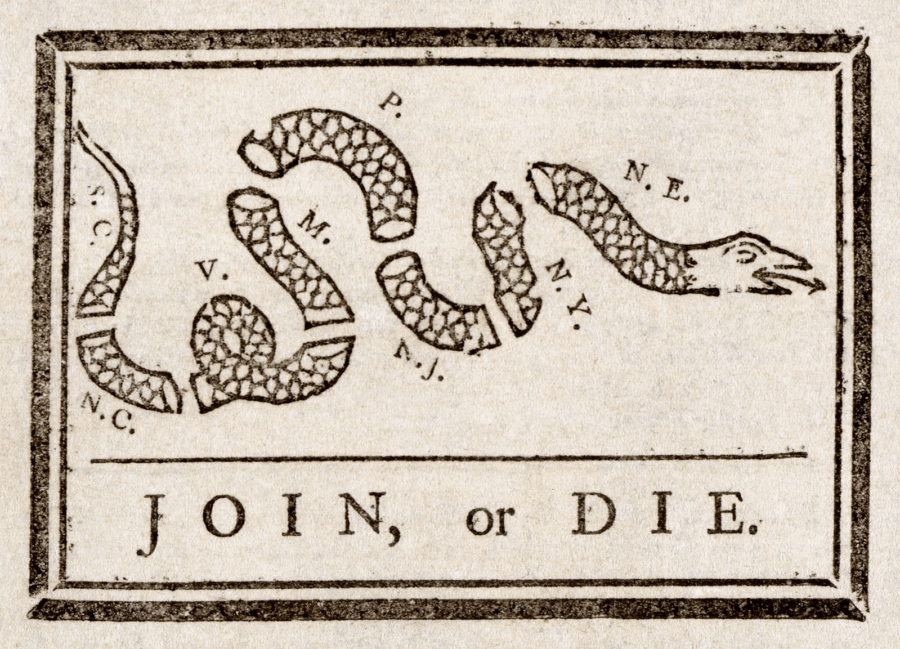
Wikimedia CommonsBenjamin Franklin published this cartoon in 1754.
Concerned about the aggression of the French and the lack of a strong colonial alliance in America, Benjamin Franklin published his famous “Join or Die” cartoon on May 9, 1754, in his Pennsylvania Gazette. In addition, he wrote an op-ed that argued for a more unified colonial government.
This wasn’t Franklin’s first political cartoon — he’d published another one in 1747 — but it was his most enduring. Ten years later, his snake emblem resurfaced when colonists protested the Stamp Act. It would also be used during the Revolutionary War, and even by both sides during the Civil War.
Shocking Fact About Benjamin Franklin: He Was A Notorious Womanizer
Benjamin Franklin wrote in his autobiography that “the hard-to-be-governed passion of my youth had hurried me frequently into intrigues with low women that fell in my way.” Indeed, he was quite the womanizer.
As a young man, he made advances toward his friend’s mistress and also fathered an “illegitimate” child. And even when he reached his 50s, Franklin spent little time with his wife in Philadelphia. Instead, he chose to gallivant around London and Paris in order to satisfy his urges.
He Invented The Odometer
Tasked by the British government with improving the colonies’ postal system, Franklin worked tirelessly to streamline mail delivery — and invented the first odometer. He measured the distances between postal stations with a geared device fitted to the back wheel of his carriage.
The machine clicked ahead by one mile with every 400 revolutions of the wheel, which allowed Franklin to accurately measure the early colonial roads — and thus thoroughly improve postal routes in the system.
He Suggested Something Similar To Daylight Savings Time
While Benjamin Franklin did not invent what is now known as Daylight Savings Time, he did propose a pretty similar system. Franklin was also the first person to have such an idea in recorded history.
This happened in 1784 when the 78-year-old Franklin was serving as an ambassador to France. After being rudely awakened by the summer sun at 6 a.m., he penned a satirical essay that suggested Parisians could save money through “the economy of using sunshine instead of candles.”
Since time wasn’t standardized back then, his idea had no way of being implemented. But years later, in the early 1900s, William Willett of England led the first campaign to do what Franklin had previously suggested.
Benjamin Franklin Was The 15th Of 17 Children
Born on January 17, 1706, in Boston, Massachusetts, Benjamin Franklin was one of 17 children. His father, Josiah, had married twice. Josiah had seven children with his first wife and 10 more with his second, Franklin’s mother Abiah Folger. Franklin was the 15th of 17 kids and the youngest son.
He Was An Early Proponent Of Inoculation
Benjamin Franklin was one of the earliest supporters of vaccination — specifically for smallpox. The outbreaks in Boston in 1721 and 1730 left an impression on him and he preached to everyone, including his wife, that the preventative method of inoculation made scientific sense.
But Franklin’s wife didn’t believe that injecting fluid from an infected person into a healthy person would create immunity and so she chose not to inoculate their son, Francis. Unfortunately, Francis died of smallpox in 1736.
Franklin Invented The Flexible Urinary Catheter
When Benjamin Franklin’s brother John experienced painful bladder stones, the resourceful inventor set to work on finding a solution for him.
Franklin designed the flexible urinary catheter in 1752, the earliest of its kind. It was made of metal parts and hinged together with a wire, which was thoroughly enclosed so that there was enough rigidity during its insertion.
He Had Only Two Years Of Formal Education
Benjamin Franklin learned to read at a young age and was a promising student at the Boston Latin School. But Franklin’s father had a failing candle and soap shop that needed all the help that it could get. So, at the age of 10, Franklin dropped out of school to help in the shop full-time.
Unstimulated by his work, Franklin spent his free time reading books. He also honed his memory skills by reading essays and then rewriting them without looking. And despite his lack of formal education, Franklin earned honorary degrees from Harvard, Yale, and several other top institutions.
He Published His Early Writing Under A Female Pseudonym
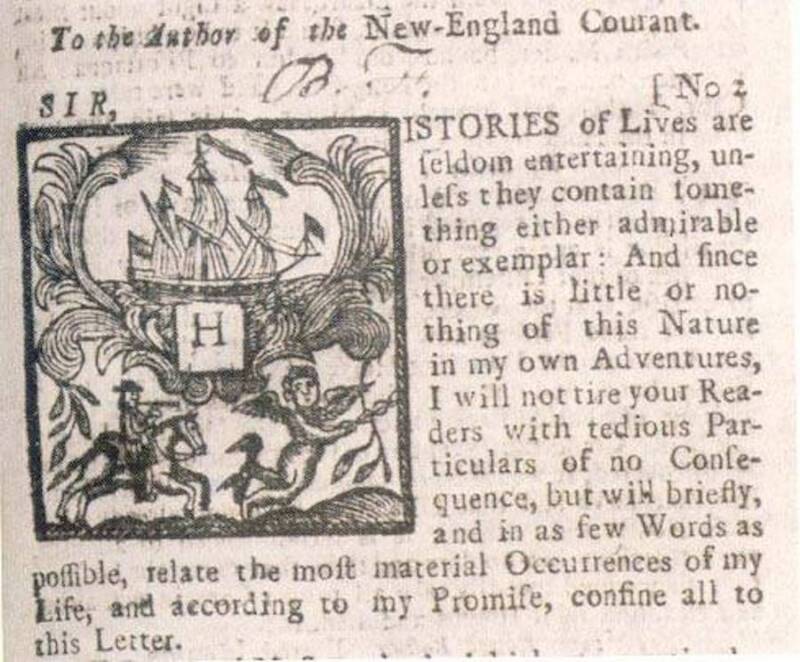
Wikimedia CommonsWhen Franklin’s brother refused to publish his letters in his newspaper, the scorned sibling began writing and submitting work under the name “Silence Dogood.”
After working in his father’s shop, Benjamin Franklin became an apprentice at the print shop of his older brother, James. Though he learned a lot about newspaper publishing, Franklin was routinely beaten by his brother, who also refused to publish any of his writing in The New-England Courant. So, Franklin submitted his work as a “woman” named “Silence Dogood.”
“Dogood” became wildly popular and Franklin only revealed the writer’s true identity after “she” started receiving marriage proposals.
Eventually, Franklin grew tired of his brother’s “harsh and tyrannical” behavior toward him. He decided to flee Boston in 1723, breaking his contractual obligation to his brother as his apprentice in the print shop.
Astonishing Fact About Benjamin Franklin: He Was Briefly A Fugitive
By fleeing his brother’s print shop, Benjamin Franklin became a fugitive. This was illegal since he was contractually obliged to be his brother’s apprentice.
But it also helped Franklin to strike out on his own. In 1728, Franklin and a friend opened a print shop. They published books and pamphlets, and Franklin was named the official printer of Pennsylvania in 1730.
He purchased The Pennsylvania Gazette and transformed it into the most popular newspaper in the colonies. Franklin also launched his popular Poor Richard’s Almanack, which set him on the path to immeasurable riches.
Franklin “Retired” At The Age Of 42

Public DomainFranklin’s popular almanac was printed 10,000 times a year and helped make him a rich man.
Starting in 1733, Benjamin Franklin published the widely successful Poor Richard’s Almanack once a year for 25 years. It contained weather predictions, poems, recipes, advice, trivia, and proverbs.
It was such a huge hit in the colonies that Franklin eventually accumulated enough cash to retire from the printing business. He became a “gentleman of leisure” at the age of 42 and focused on his studies and inventions.
He Had His Doubts About The American Revolution At First
At the signing of the Declaration of Independence, Benjamin Franklin allegedly quipped, “We must all hang together, or, most assuredly, we shall all hang separately.” But the founding father wasn’t always so gung-ho about the idea of revolting against Great Britain during the American Revolution.
He once wrote, “Every encroachment on rights is not worth a rebellion,” and called the Boston Tea Party an “act of violent injustice on our part.”
Benjamin Franklin’s Son Was A British Loyalist
Benjamin Franklin was close with his “illegitimate” son William — until the American Revolution. Then, William remained a loyal Tory and refused to resign from his position as the royal governor of New Jersey.
For that choice, he’d eventually spend two years in colonial prison. And Franklin would ultimately cut him out of his will.
He Started The First Volunteer Fire Department In America
In articles published in the Pennsylvania Gazette, Franklin expressed the need for better fire prevention methods. This led to the formation of the Union Fire Company in Philadelphia in December 1736. Unofficially, the department became known as Benjamin Franklin’s Bucket Brigade.
Interesting Fact About Benjamin Franklin: He Was A Champion Chess Player
Benjamin Franklin was a prolific chess player who introduced the board game to America and wrote the famous essay “The Morals of Chess.” He was eventually inducted into the Chess Hall of Fame in 1999.
He Was Never The President…
Franklin is often referred to as the “only U.S. President to have never been U.S. President.” But he was the governor of Pennsylvania and the ambassador to France and Sweden. And Franklin was close with some men who did become president, including John Adams and Thomas Jefferson.
… But He Was The First Postmaster General Of The United States
In 1753, the British Crown made Benjamin Franklin the postmaster of all 13 colonies, a post he held for two decades. And in July 1755, the Continental Congress made Franklin the first postmaster general.
Little-Known Fact About Benjamin Franklin: He Was A Great Swimmer
Franklin loved the water and even invented hand flippers to go faster. He later earned a spot in the International Swimming Hall of Fame in 1968.
He Became A Fashion Icon While Living In Paris
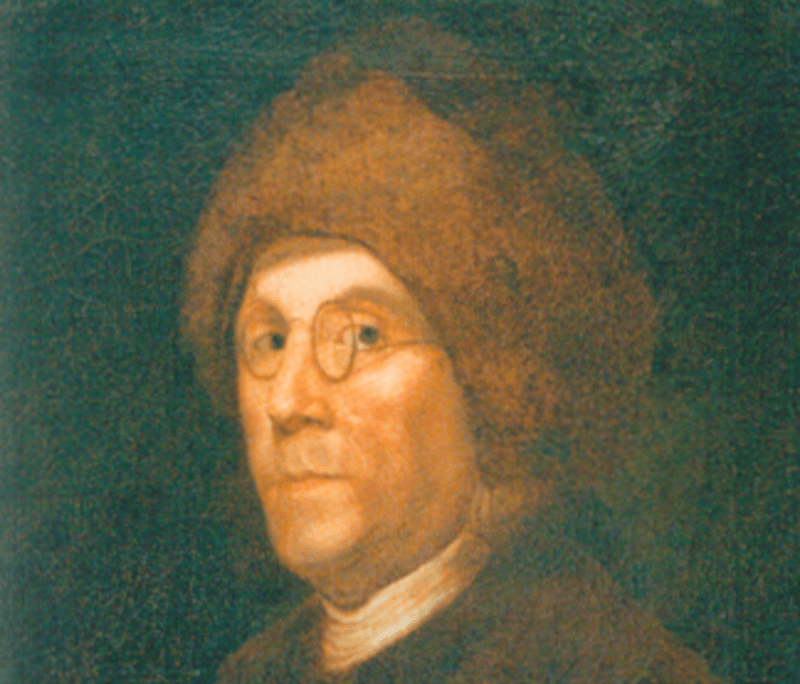
Wikimedia CommonsFranklin became a French fashion icon in 1776.
When Franklin went to France in 1776 to rustle up support for the Revolution, he played up the rustic American look with a fur hat and plain clothes.
The French loved it. Women across the country could soon be seen in fur caps and big wigs in a style dubbed “coiffure à la Franklin.”
Fascinating Fact About Benjamin Franklin: He Perfected The Glass Armonica
By the 1700s, Europeans had devised a way of filling glasses with wine and rubbing the rims to make music. But Franklin took this idea and ran with it. He invented the glass armonica in 1761, which was made of 37 glass bowls.
“Of all my inventions,” Franklin declared, “the glass armonica has given me the greatest personal satisfaction.”
He Became An Abolitionist Later In Life
Benjamin Franklin once owned slaves at his print shop, but he later became convinced of the gross inhumanity of the practice.
Franklin presented an abolitionist petition to Congress shortly before his death at age 84 in 1790, and he also included a provision in his will that his daughter had to free her slave in order to receive her inheritance.
Franklin Left Huge Sums Of Money To His Favorite Cities
Benjamin Franklin left $2,000 sterling to his birthplace (Boston) and his hometown (Philadelphia). However, Franklin also stipulated that the money had to be placed in a trust for 200 years. So by the time the cities gained access to the gift, it was worth a total of $6.5 million.
He Lived His Life According To 13 Virtues
Benjamin Franklin wrote down 13 virtues when he was 20 years old — and sought to practice them throughout the rest of his life.
They included: Temperance, Silence, Order, Resolution, Frugality, Industry, Sincerity, Justice, Moderation, Cleanliness, Tranquility, Chastity, and Humility.
But even Franklin admitted that he couldn’t always live up to them.
“On the whole, tho’ I never arrived at the Perfection I had been so ambitious of obtaining but fell short of it,” he wrote of his failure to follow his own virtues all the time. “Yet as I was, by the Endeavor, a better and a happier Man than I otherwise should have been if I had not attempted it.”
Franklin Thought He Could Improve The Alphabet
Benjamin Franklin came up with many enduring ideas during his life. But one of his inventions that didn’t stick had to do with trimming down the alphabet. In his version, there was no C, J, Q, W, X, or Y.
Startling Fact About Benjamin Franklin: He Liked To Take Air Baths In The Nude
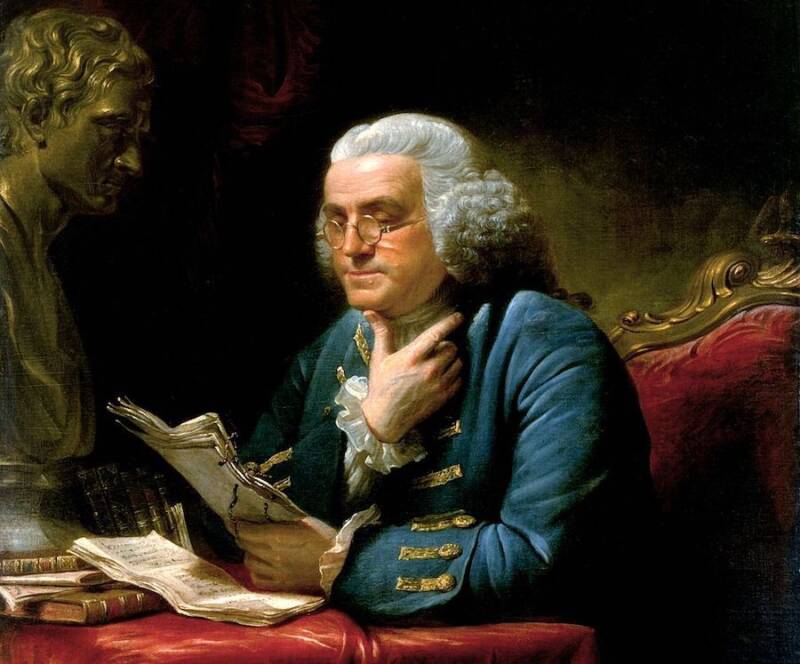
Wikimedia CommonsThough Benjamin Franklin had a studious reputation, he picked up a number of eccentric habits like “air baths.”
In Franklin’s time, cold baths were considered to be good for health. But Franklin found them uncomfortable. Instead, he liked to take “air baths.”
“I have found it much more agreeable to my constitution to bathe in another element, I mean cold air,” he explained in a letter. “With this view, I rise early almost every morning, and sit in my chamber without any clothes whatever, half an hour or an hour, according to the season, either reading or writing.”
Benjamin Franklin Enjoyed Discussing Philosophy Over Drinks
Benjamin Franklin founded a group known as the Junto in 1727. Initially consisting of 12 members with different backgrounds, the group would meet in taverns, have a drink, and discuss philosophical matters. Eventually, Franklin would also start to discuss social issues of the time.
“Our debates were to be under the direction of a president, and to be conducted in the sincere spirit of inquiry after truth, without fondness for dispute or desire of victory,” he wrote. “[To] prevent warmth, all expressions of positiveness in opinions, or direct contradiction, were after some time made contraband, and prohibited under small pecuniary penalties.”
At these meetings, Franklin would come up with some of his best civic ideas like founding a public hospital, a lending library, the first American volunteer fire department, and even the University of Pennsylvania.
The Remains Of 10 People Were Later Found In His Basement
From 1757 to 1775, Franklin lived in a four-story home on 36 Craven Street in London. And when it was renovated into a museum in 1998, construction workers made a disturbing discovery — human remains.
At first, it seemed as though there was only a thigh bone sticking out of the dirt floor. But after the authorities were called, officials found a whopping 1,200 pieces of human remains belonging to 10 people, including six children. The remains were all more than 200 years old.
Fortunately, the reason these skeletons were stashed in Franklin’s house wasn’t as grisly as it may seem. Franklin had allowed William Hewson, a former anatomy student, to use his basement for practice. It’s unclear whether Franklin knew the young man was working on cadavers.
After brushing up on these remarkable Benjamin Franklin facts, read up on the dark side of Thomas Jefferson. Then, check out these George Washington facts that may surprise you.





